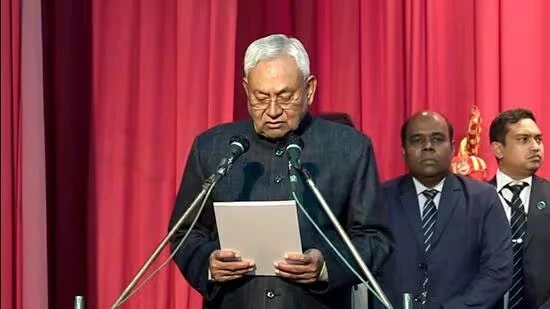In a significant political move, Janata Dal-United (JDU) chief Nitish Kumar secured his ninth term as Bihar Chief Minister in a swearing-in ceremony at Raj Bhavan. The event marked a seismic shift in alliances as Kumar severed ties with the Rashtriya Janata Dal (RJD) and Congress, forming a coalition with the Bharatiya Janata Party (BJP).
The revamped team, introduced during the ceremony, features key players such as Samrat Choudhary, Vijay Kumar Sinha, and others, signaling a political renaissance in Bihar.
At the forefront of this transition is Samrat Choudhary, the newly appointed Deputy Chief Minister and BJP state President. Known for his distinctive turban, Choudhary, an OBC leader from the Koeri community, has held previous ministerial positions in Urban Development, Housing, Health, and Metrology and Horticulture. His political journey spans multiple parties, including the RJD and the JDU.
In parallel, Vijay Kumar Sinha, a 64-year-old from the influential Bhumihar community, assumes a significant role. Beginning his political journey with the Akhil Bharatiya Vidyarthi Parishad, the student wing of the Rashtriya Swayamsevak Sangh (RSS), Sinha’s electoral debut occurred in 2010. Seven years later, he became the Minister of Labour Resources and subsequently the Speaker of the Bihar Assembly in 2020.
The strategic pairing of Choudhary and Sinha as the deputy chief ministerial duo reflects the BJP’s calculated move to balance caste considerations. This alliance aims to appease OBCs while retaining the support of the core upper caste base.
The broader cabinet includes leaders like Prem Kumar, Vijay Kumar Chaudhary, Vijendra Yadav, Santosh Kumar Suman, Shravan Kumar, and Independent MLA Sumit Kumar Singh. Notably, JDU’s Shravan Kumar, belonging to the Kurmi community like Nitish Kumar, further emphasizes caste dynamics in the political landscape, constituting 2.8 percent of the total population according to a recent Bihar caste survey.

